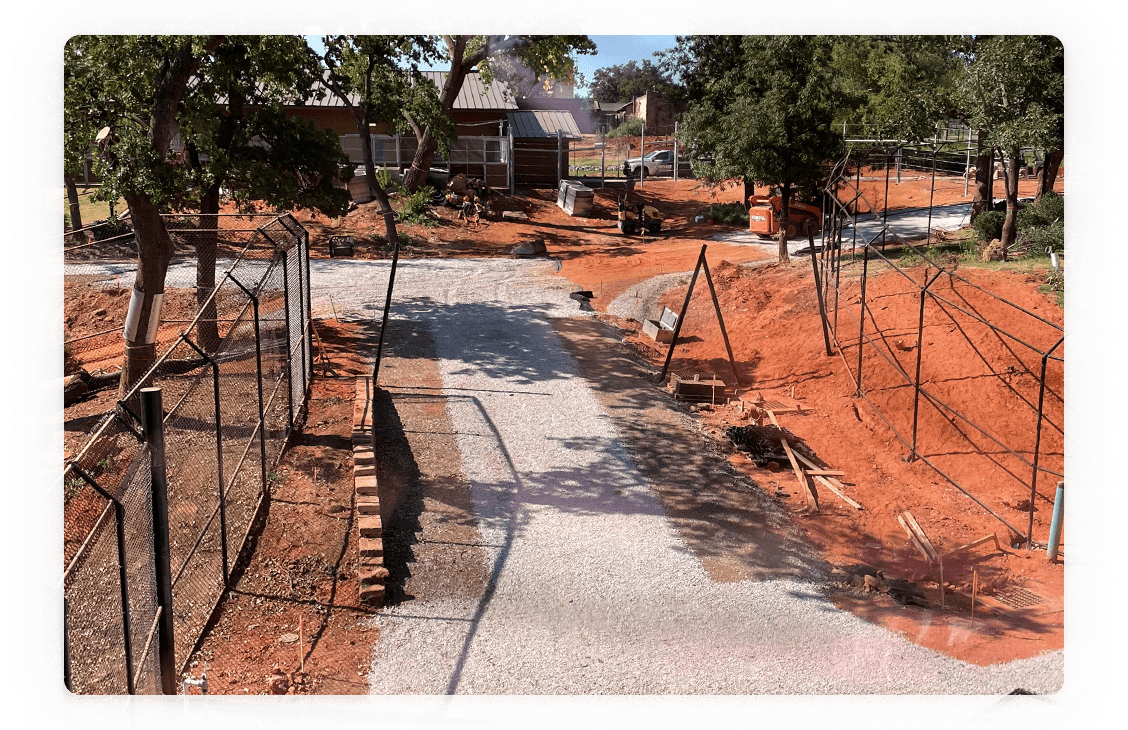
Understanding the impact and benefit of Permeable Pavers
As cities nationwide implement stricter impervious cover requirements, permeable pavers offer a sustainable solution to these challenges by providing both aesthetic value and environmental benefits. Our blog post, “Understanding the impact and benefit of Permeable Pavers,” explores the intricacies of permeable pavers, including different types, benefits, and applications.
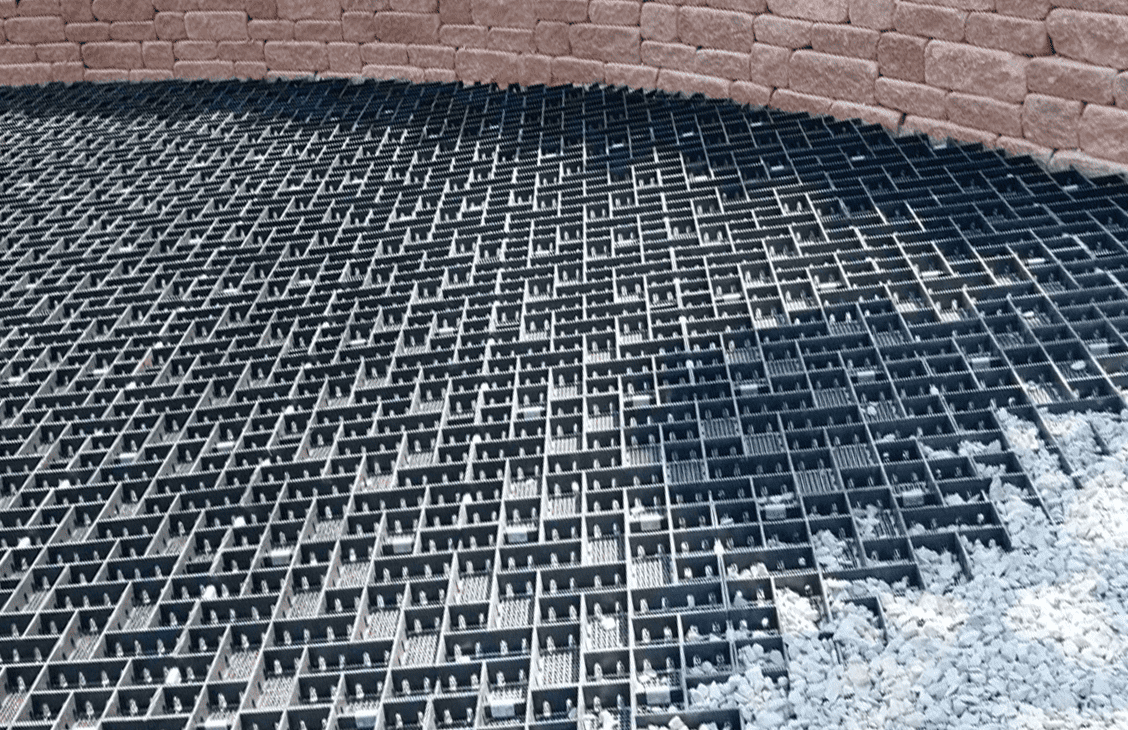
Permeable pavers are a sustainable construction material mainly used for paving purposes. Their unique design allows rainwater and other types of precipitation to pass through the surface and into the underlying soil layers or a specially prepared sub-base. Allowing water to permeate helps manage stormwater runoff, reduce local flooding, replenish groundwater, and even filter pollutants from the water.
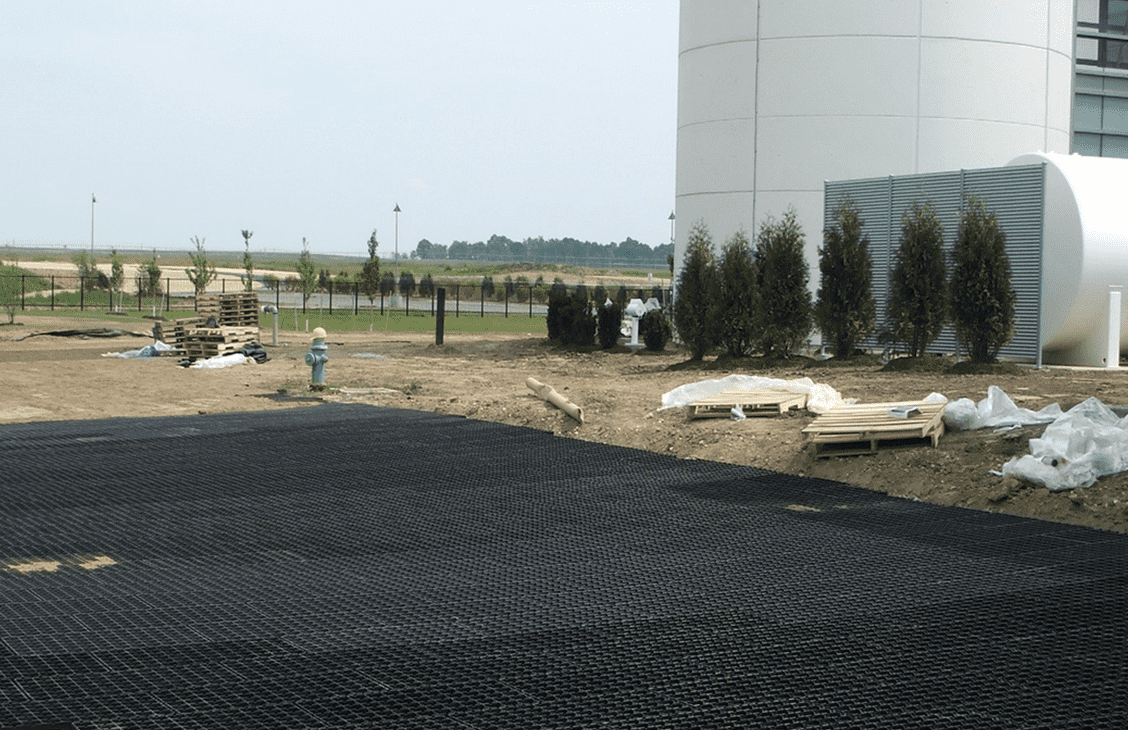
Permeable pavers offer a range of environmental, functional, and aesthetic advantages, including the following primary benefits:
Stormwater Management:
Permeable pavers are an excellent solution for managing stormwater effectively. They absorb water, reducing surface runoff that can lead to flooding, and also control erosion by decreasing the speed and volume of runoff that can erode soil.
Permeable surfaces and their underlying layers improve water quality by naturally filtering out many contaminants, pollutants, and sediments, resulting in cleaner groundwater. These pavers replenish local aquifers by allowing water to infiltrate the soil, ensuring a sustainable water source.
Flexibility in Design:
Permeable pavers are flexible and can be customized with various designs, patterns, and materials to complement multiple architectural and landscape styles. They are durable, designed to handle heavy loads, suitable for high-traffic areas, and can have a lifespan comparable to traditional paving materials when properly installed. While periodic cleaning is necessary to maintain permeability, it can be less maintenance-intensive than conventional paving methods.
Permeable surfaces enhance safety by quickly draining water, which diminishes puddle formation and the risk of hydroplaning in vehicular zones. In colder climates, this rapid drainage also reduces ice formation on the surface, lowering the potential for slips and falls.
Economic Benefits:
Economically, permeable pavers can offer infrastructure savings by reducing the dependency on traditional stormwater systems. Some municipalities and regions provide incentives such as tax credits, rebates, or reduced fees for properties that integrate sustainable infrastructure, including permeable pavers, which can help offset initial installation costs.
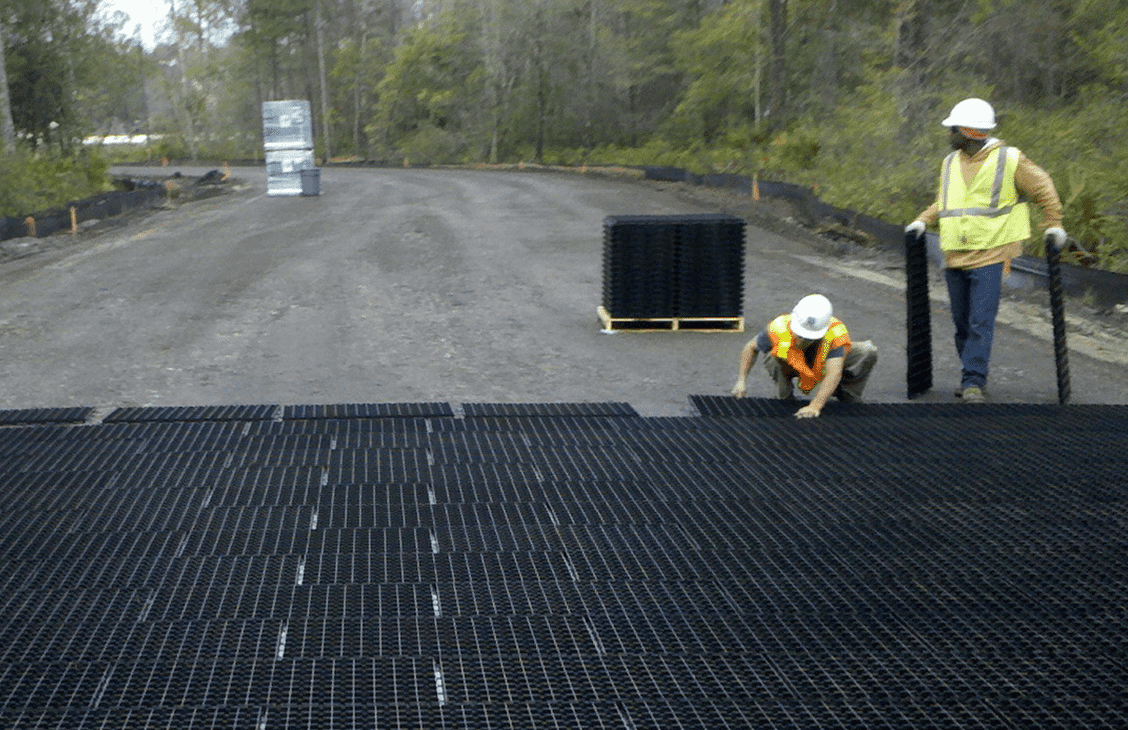
The GEOBLOCK system boasts a range of advantages, including exceptional load transfer and flexural strength, as well as resistance to torsional loads and rutting. Its design, characterized by deep interconnected cells, safeguards topsoil and grass from damage due to repeated loading, ensuring superior turf performance. Additionally, its strong unit strength reduces installation costs, necessitating a shallower base depth compared to other systems while still achieving HS25 loading.
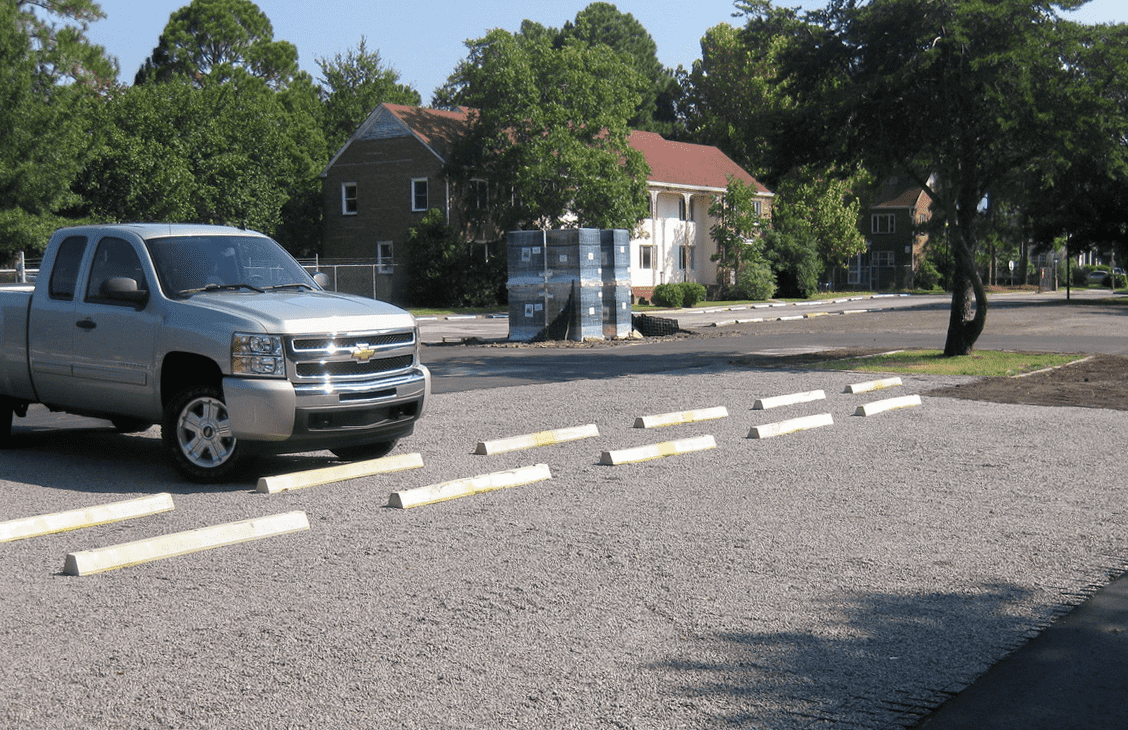
When installed and maintained correctly, permeable pavers can last as long as traditional paving materials, often up to 20-30 years or more. The lifespan of these pavers can be affected by various factors, including the quality of materials used, installation process, local climate, usage intensity, and maintenance practices. Regular maintenance, like cleaning to prevent clogging in the permeable spaces, can help extend their lifespan and ensure effective performance in stormwater management.

Permeable pavers are designed to allow rainwater to infiltrate the ground or a designated sub-base underneath. They achieve this by using porous materials or leaving intentional spaces between the pavers. On the other hand, concrete pavers are usually non-porous, which prevents water from passing through the material. Therefore, water tends to run off concrete pavers unless designed explicitly with permeable gaps.
Permeable pavers can be made of various materials, such as porous concrete, asphalt, or plastic grids. Concrete pavers, however, are predominantly made of a concrete mixture comprising cement, aggregate, and water, and they're typically non-porous unless designed otherwise. Permeable pavers offer substantial advantages from an environmental perspective.
Permeable pavers are ideal for locations where managing stormwater or recharging groundwater is vital, such as in urban areas, parking lots, and patios. Concrete pavers, however, are favored for driveways, patios, and walkways, with a significant emphasis on their visual appeal and resilience.
The primary distinction between permeable and concrete pavers is how they handle water. Permeable pavers allow water to seep through, delivering environmental advantages, while concrete pavers prioritize aesthetic value and durability, often leading to water runoff.
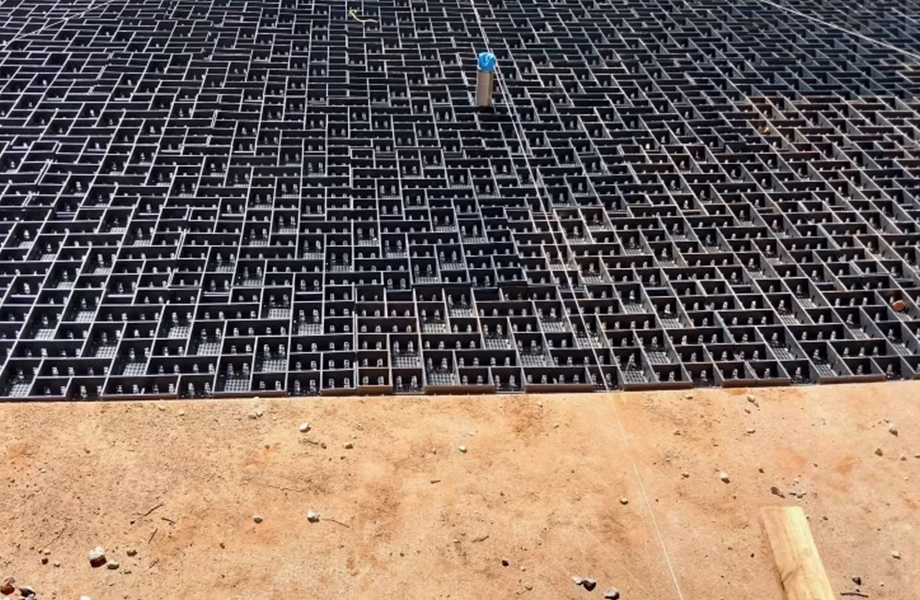
The cost of permeable pavers can vary depending on the material, design, region, labor costs, and the specific requirements of a project.
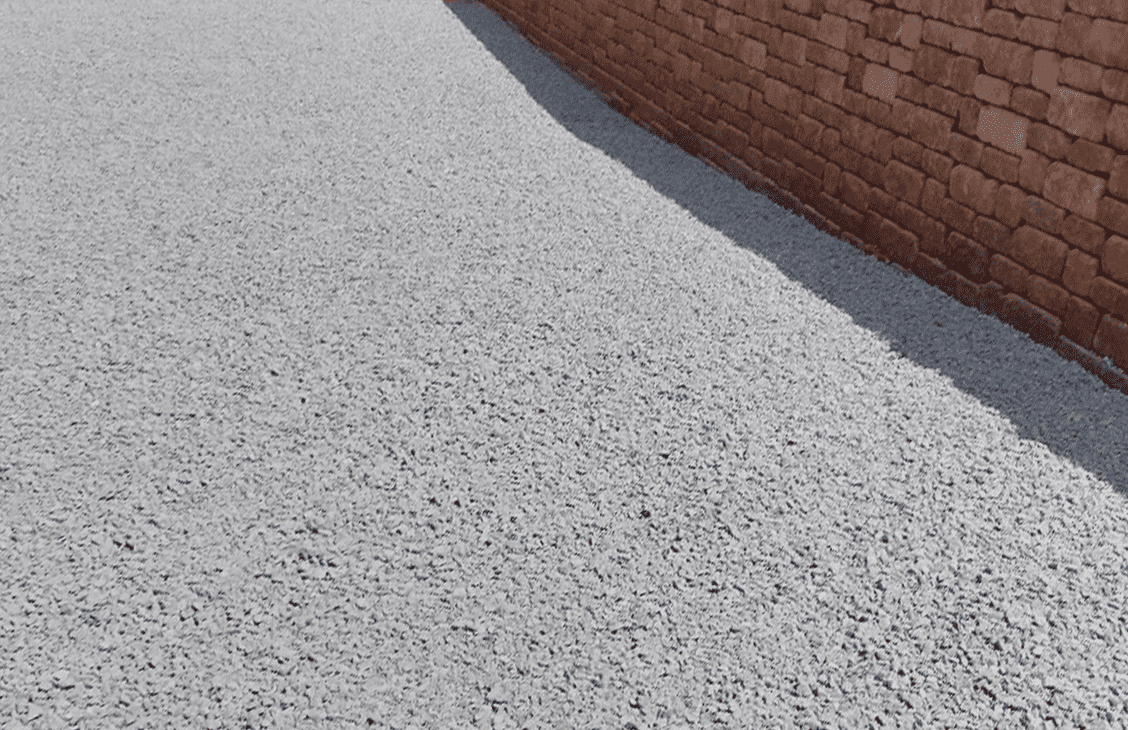
Installing permeable pavers involves a systematic process to ensure proper water infiltration and paver stability. While the specific steps can vary based on the paver type and site conditions, the following is a general guideline for installing permeable pavers:
Installing permeable pavers involves several essential steps. The first step is to assess the suitability of the soil for water infiltration, which can be done through a percolation test. It's also essential to evaluate the site's slope and drainage patterns and design the layout accordingly. Excavation is the next step, involving the removal of topsoil and digging to the required depth for the intended use. The subgrade preparation follows, which includes compacting the soil to create a stable base and ensuring a slight slope for water direction.
A geotextile fabric should be laid at the bottom of the excavated area to stabilize the soil, improve load distribution, and prevent mixing the different aggregate layers. Next comes the base layer, which involves placing and compacting a coarse, clean aggregate layer. This serves as the primary storage and infiltration layer. Depending on design needs, one or more layers of smaller aggregate may be added and compacted to improve filtration and distribute weight.
The next step is to lay a thin layer of finer aggregate, such as coarse sand, to create a smooth setting bed for the pavers. When installing pavers, starting from a straight edge or corner is best followed by the desired pattern. Spacers should be used if the design calls for consistent gaps between pavers. Pavers may also need to be cut at the edges.
Once the pavers are in place, fill the gaps between them with fine aggregate, often a specific jointing stone. This aggregate is essential for permeability. After that, use a mechanical compactor to level and interlock the pavers into the setting bed. This will require more jointing stones to fill the joints after compaction.
Finally, clean the surface to remove any remaining debris, and if necessary, install edge restraints to prevent lateral movement of the pavers. Maintaining permeability by periodically checking for clogging and cleaning the surface using a vacuum sweeper is essential. Also, replace damaged pavers as needed. Always refer to manufacturer guidelines and local best practices when installing permeable pavers. For large or complex projects, or if you're unfamiliar with the process, consider hiring a professional with experience in permeable paver installation.
Permeable paver preferences vary based on region, application, aesthetic choices, and local availability. However, at GeoSolutions, we recommend the following:
GEOPAVE® Gravel Pavers:
The GEOPAVE Gravel Pavers are known for their exceptional permeability that boosts groundwater recharge and curtails surface runoff from paved locales. They promise minimal site disruption and a reduced environmental footprint by eliminating the need for expansive on-site stormwater ponds. Beyond their primary role as stormwater managers, these pavements also enhance water infiltration, filter out contaminants, and curb non-point source pollution. Moreover, with a composition featuring up to 97% recycled polyethylene and a naturally cooler surface, the GEOPAVE system redefines sustainable and eco-friendly pavement solutions. Dive in to discover why it stands out in modern pavements!
LEARN MORE.
GEOBLOCK® Grass Pavers:
Looking for the future of turf protection and sustainable pavements? Discover the GEOBLOCK system – the epitome of innovation in the realm of sustainable infrastructure. Beyond its impressive strength for traffic support, it stands out for its environmental impact, boasting groundwater recharge abilities and being crafted from up to 97% recycled polyethylene. From college campuses and golf courses to residential driveways and emergency access lanes, the GEOBLOCK system guarantees enduring performance with an eco-friendly touch. Join us in uncovering the brilliance of the GEOBLOCK system setting new standards in turf protection and eco-friendly pavements.
LEARN MORE.
In the face of rapid urbanization, the need for sustainable infrastructure solutions is paramount. Permeable pavers have emerged as frontrunners in addressing the environmental challenges of traditional impervious surfaces, such as increased stormwater runoff and local flooding. These pavers, with their unique design, not only manage stormwater effectively but also offer a plethora of benefits ranging from groundwater replenishment to pollutant filtration. Their design flexibility and economic advantages make them a sought-after choice for urban planners and developers. While they might come with a higher initial cost, their long-term environmental and infrastructural benefits are undeniable. Furthermore, with products like the GEOPAVE Gravel Pavers and GEOBLOCK Grass Pavers, crafted with up to 97% recycled polyethylene, the industry is taking significant strides towards eco-friendly and sustainable solutions. As cities continue to grow and evolve, integrating permeable pavers into infrastructure planning will ensure a harmonious balance between development and environmental conservation.
